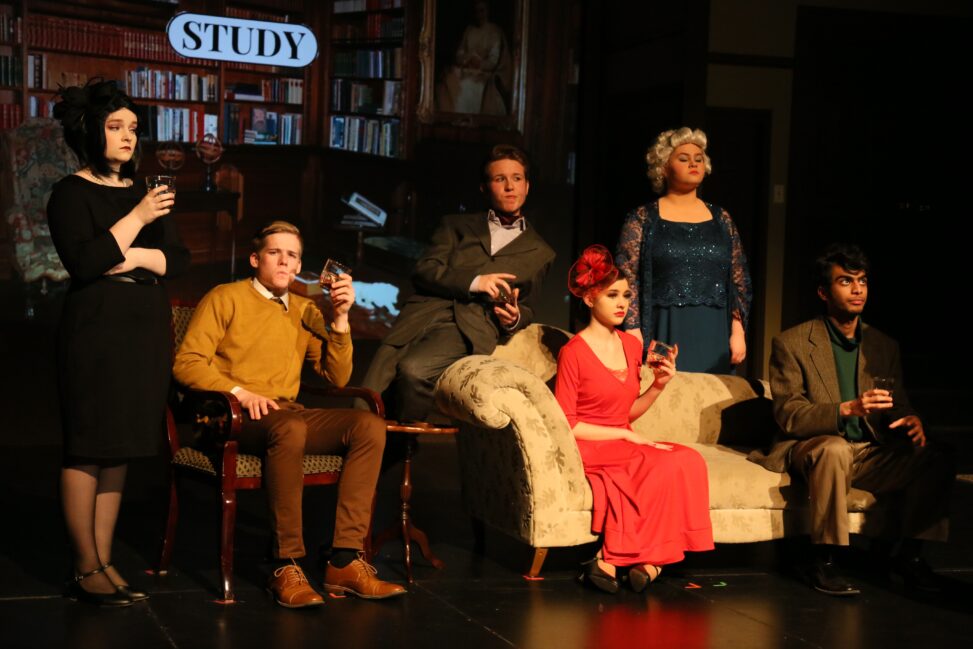Image Attribution: “CLUE Character Cosplay” by Abby Perrin is licensed under CC0. (See interactive map)
My drama class high school had a huge obsession with the popular board game CLUE. We would play it together in our downtime and on the last week of classes we decided to play it ‘in real life’. We set up the stage in our school to depict the ‘study’ location and dressed up as our characters. This image depicts from left to right, Mrs. White, Colonel Mustard, Professor Plum, Miss Scarlet, Mrs. Peacock and Mr. Green. We’re all performers and we realized that “Fan costumes are just one example of how fans express their affection for existing stories and rework them through various media”(Lamerichs 1.2 2011). The costumes were a mix of what we could find in our drama department storage and thrifted items.
Choosing our characters was easy, after ages of playing the game together each of us clearly identified with one character over the others. There were multiples of each character that are not in this picture, I was another Miss Scarlet as that was the character that I felt the strongest connection with. The Miss Scarlet pictured above is my best friend which shows that our similarities that made us friends, also led us to identify with the same character. Being performers, we know that getting in costume truly helps you become your character, so cosplay only felt natural to us. Our identities are shaped by the things we love and the media we regularly consume. People love cosplay because it feels natural to dress up as someone you identify strongly with, like you’re just fully embracing a part of your already existing personality.
Our recreation of the game was a form of “mimetic fan production”, (Hills 2010) which is what most of cosplay is. None of us had ever done, what we considered, cosplay before. We thought of cosplay as some nerdy Japanese trend that we did not relate to. Through doing this recreation, getting all dressed up and having the time of our lives we realized there were a lot of similarities to theatre. Dressing up and pretending to be someone else was what we did all the time, except this time we got to choose the show and choose our characters and become something we all loved and identified with. We went all out with our costumes, props, and lighting which gave us some really cool photos to look back on.
Cosplay is a great way to express your personality and feel apart of something you love, it has evolved and spread across the world because it’s fun. We are all super fans of something whether it’s a game, a tv show, an anime or something else. These things are apart of who we are and cosplay is an exciting way to do that.
Hills, M. (2010, September 10). “As Seen on Screen? Mimetic SF Fandom and the Crafting of Replica(nt)s.” In Media Res. Retrieved October 15, 2021, from http://mediacommons.futureofthebook.org/imr/2010/09/10/seen-screen-mimetic-sf-fandom-crafting-replicants
Lamerichs, N. (2011, September 15). Stranger than fiction: Fan identity in cosplay. Transformative Works and Cultures. Retrieved October 15, 2021, from https://journal.transformativeworks.org/index.php/twc/article/download/246/230?inline=1
Scott, S. (2015). “Cosplay Is Serious Business”: Gendering Material Fan Labor on Heroes of Cosplay. JSTOR. Retrieved December 15, 2021, from https://www.jstor.org/stable/43653443?seq=1#metadata_info_tab_contents
